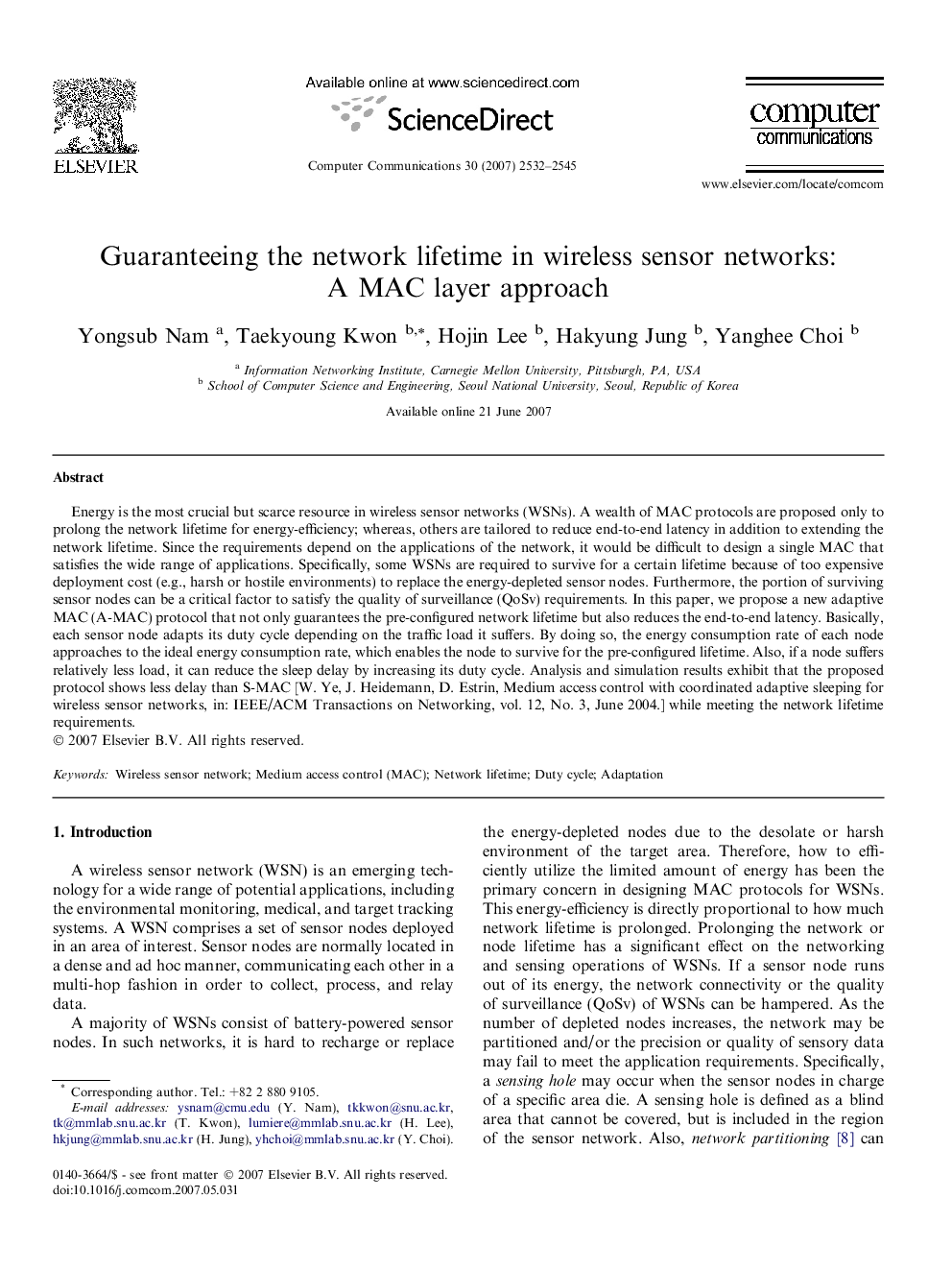| Article ID | Journal | Published Year | Pages | File Type |
|---|---|---|---|---|
| 448619 | Computer Communications | 2007 | 14 Pages |
Energy is the most crucial but scarce resource in wireless sensor networks (WSNs). A wealth of MAC protocols are proposed only to prolong the network lifetime for energy-efficiency; whereas, others are tailored to reduce end-to-end latency in addition to extending the network lifetime. Since the requirements depend on the applications of the network, it would be difficult to design a single MAC that satisfies the wide range of applications. Specifically, some WSNs are required to survive for a certain lifetime because of too expensive deployment cost (e.g., harsh or hostile environments) to replace the energy-depleted sensor nodes. Furthermore, the portion of surviving sensor nodes can be a critical factor to satisfy the quality of surveillance (QoSv) requirements. In this paper, we propose a new adaptive MAC (A-MAC) protocol that not only guarantees the pre-configured network lifetime but also reduces the end-to-end latency. Basically, each sensor node adapts its duty cycle depending on the traffic load it suffers. By doing so, the energy consumption rate of each node approaches to the ideal energy consumption rate, which enables the node to survive for the pre-configured lifetime. Also, if a node suffers relatively less load, it can reduce the sleep delay by increasing its duty cycle. Analysis and simulation results exhibit that the proposed protocol shows less delay than S-MAC [W. Ye, J. Heidemann, D. Estrin, Medium access control with coordinated adaptive sleeping for wireless sensor networks, in: IEEE/ACM Transactions on Networking, vol. 12, No. 3, June 2004.] while meeting the network lifetime requirements.
